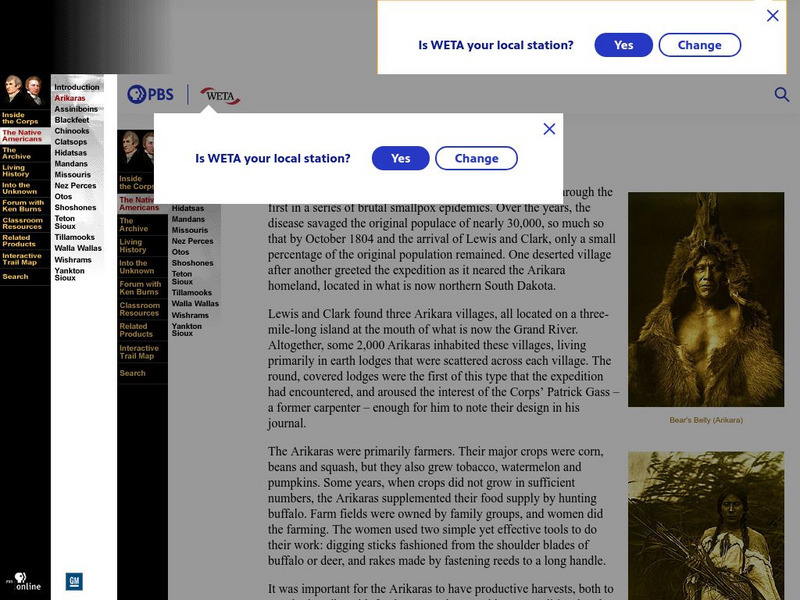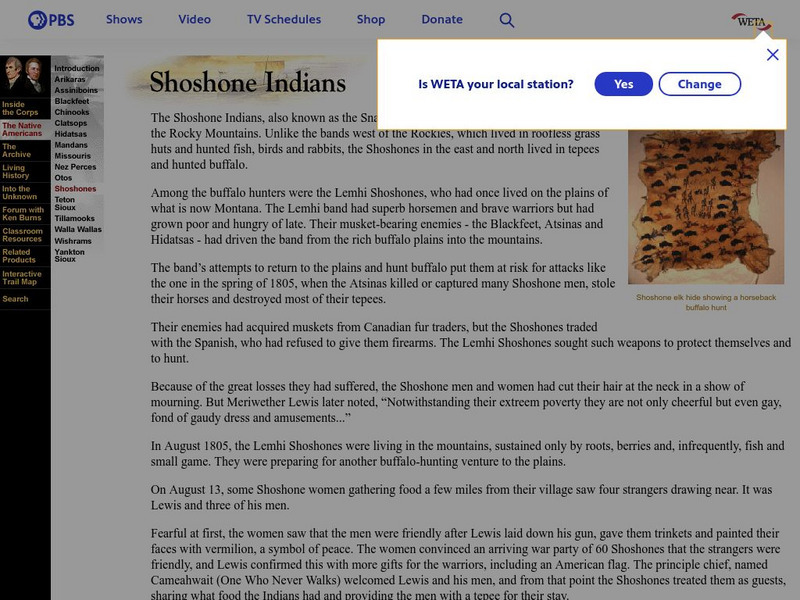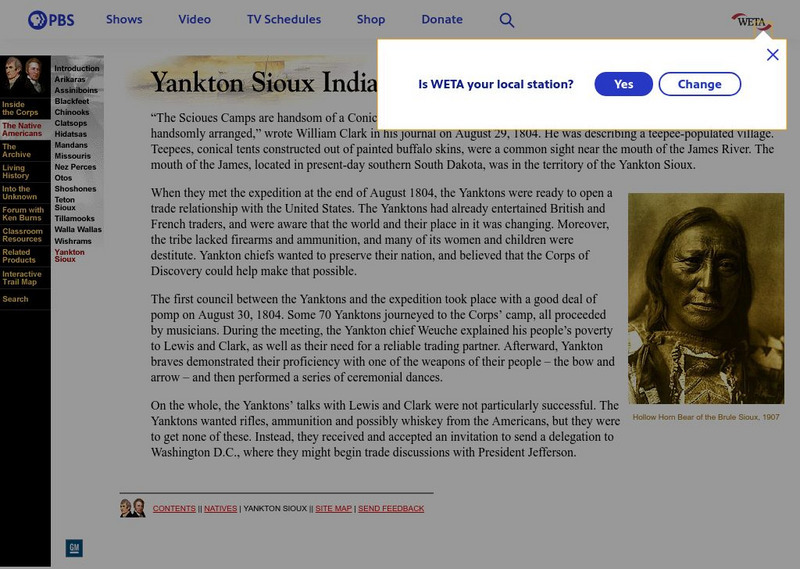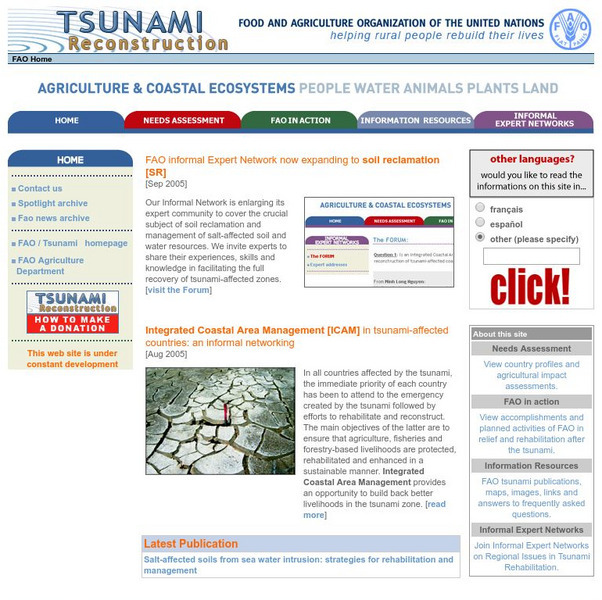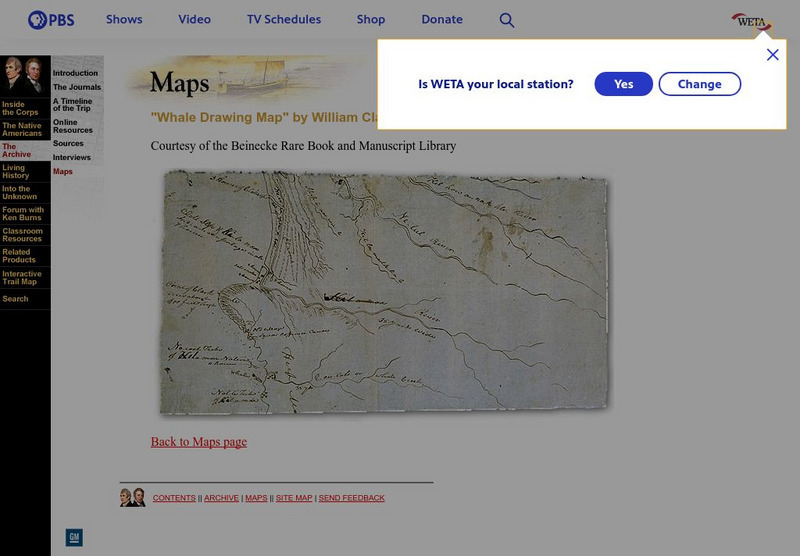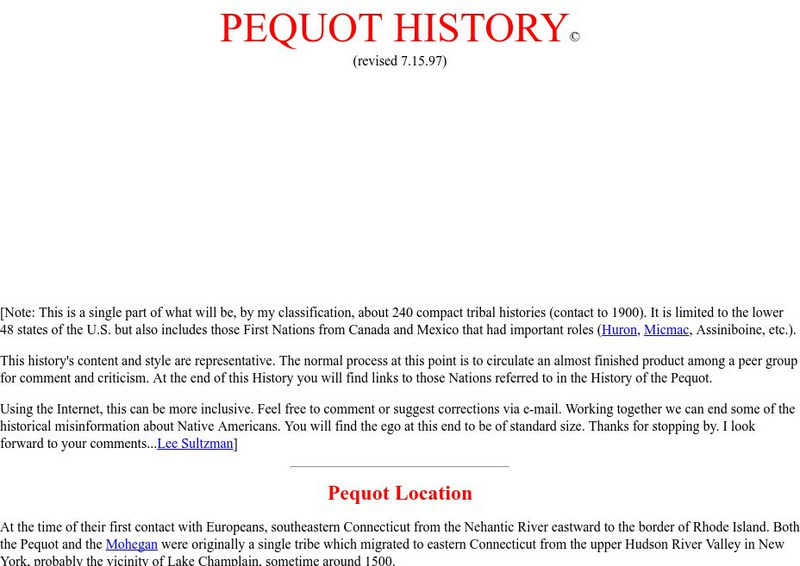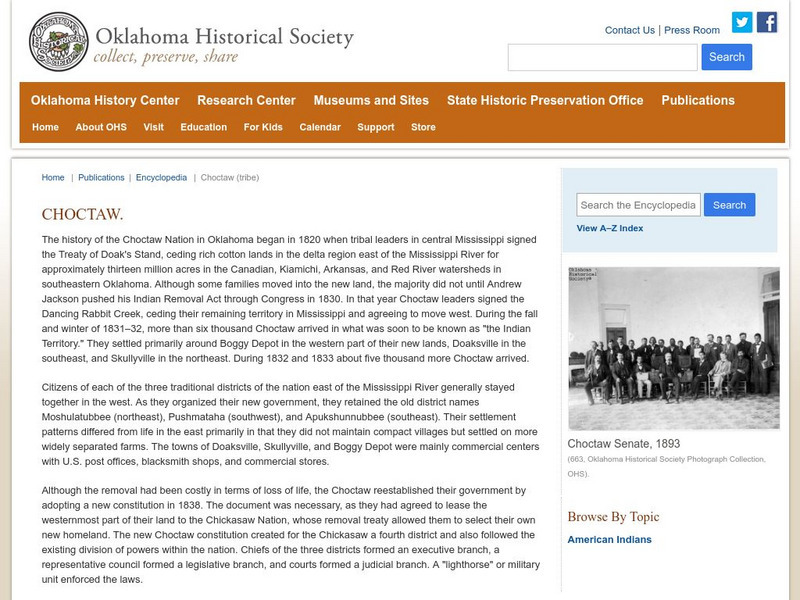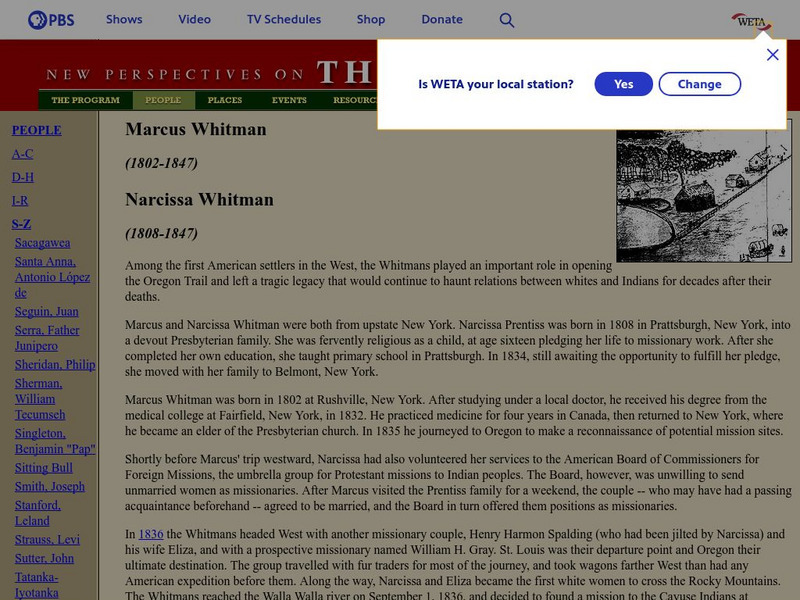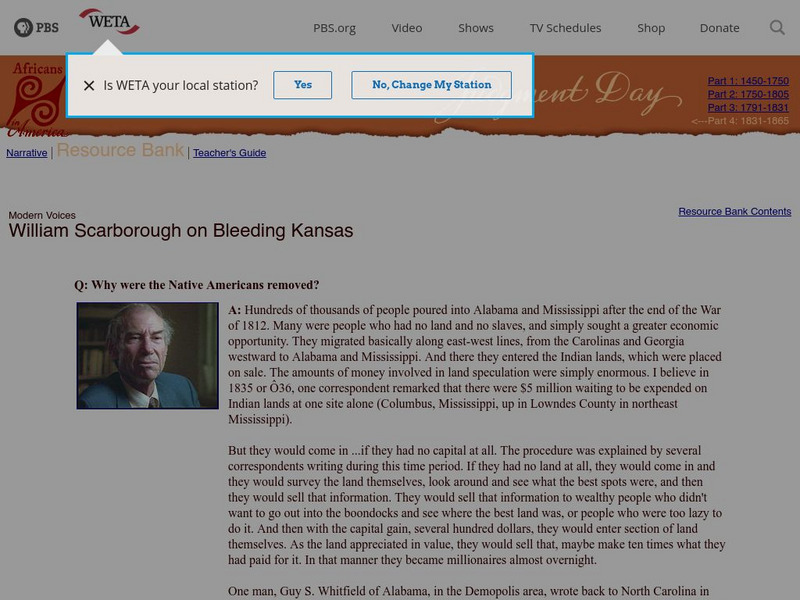PBS
Pbs: Arikara Indians
This site from PBS provides information about the Arikara Indians and the Lewis and Clark expedition.
US National Archives
Docsteach: Assimilation of American Indians
In this activity, students will analyze primary sources to determine the role and activities the federal government undertook in an attempt to 'Americanize' or assimilate Native Americans.
PBS
Pbs: Lewis and Clark: Shoshone Indians
The amazing story of the meeting between the Lemhi Shoshones and the Corps of Discovery. Read the part Sacagawea played in the success of the encounter. From PBS.
State Library of North Carolina
N Cpedia: John W. Kinchelo, Iii: American Indians at European Contact
Native Americans inhabited the New World long before European explorers began establishing settlements on the land. This entry addresses the challenges the natives had to face upon Europe's arrival, trials in relationships, and how...
PBS
Pbs: Lewis and Clark: Nez Perce Indians
A look at the life of the Nez Perce and their interaction with the Corps of Discovery.
PBS
Pbs: Lewis and Clark: Yankton Sioux Indians
Read about what the Yankton Sioux wanted from Lewis and Clark and why they were disappointed when they met the Corps of Discovery on its journey up the Missouri River. From PBS.
Food and Agricultural Organization of the United Nations
Food and Agriculture Org.: Tsunami Reconstruction
The waves have retreated, but what lies in the destruction zone and how do people put their lives back together? The Food and Agriculture arm of the UN lists updates on the reconstruction going after the 2004 Indian Ocean tsunami.
PBS
Pbs: Lewis and Clark: "Whale Drawing Map" by William Clark
See this map drawn by William Clark of where the men from the Corps of Discovery found the whale which the Tillamook Indians told them about. From PBS.
Woodrow Wilson International Center for Scholars
Wilson Center: Indian Nuclear History
A collection of digital documents analyzing the nuclear history of India.
Curated OER
Etc: The Northwest Indian Wars, 1790 1811
A map of the area around the Wabash River showing the sites of the American Indian Wars between 1790 and 1811, including the Northwest Indian War (1785-1794) and Tecumseh's War (1810-1811). The map shows the forts and rivers of the area,...
Curated OER
Etc: Maps Etc: The American Indian Nations, 1776
An early map of the southeastern North America around 1776, showing the American Indian Nations of the region at the time. The map shows colonial boundaries extending from the Atlantic coast to the Mississippi River, towns, forts, and...
Other
Pequot History
A look at the culture and history of the Pequot Indians, a Northeast Woodlands tribe living in Connecticut.
Oklahoma Historical Society
Oklahoma Historical Society: Choctaw
A summary of Choctaw history from 1820 when they ceded much of their land, through to the beginning of the 21st century. It oulines the many changes they went through, the treaties they signed, their support of the Confederate side...
PBS
New Perspectives on the West: Marcus Whitman & Narcissa Whitman
PBS site detailing the Whitmans' journey to Oregon country, their establishment of a mission, and their death at the hands of the Indians. Also includes some background information.
Other
Pilgrim Hall: King Philip's War
This site is nicely organized and describes the war's impact on the colonists as well as the Indians.
iCivics
I Civics: Elk v. Wilkins (1884)
This mini-lesson plan examines the Supreme Court's ruling that the 14th Amendment's Citizenship Clause did not apply to American Indians born on Native reservations. Students analyze a primary document and discover how the lack of...
PBS
Pbs: Aia: William Scarborough: Why Were the Native Americans Removed?
A discussion by Dr. William Scarborough about the migration into Alabama and Mississippi after the War of 1812. Whites not only displaced the Indians, but also eventually brought in thousands of slaves.
PBS
Pbs: Archives of the West: Selections From "With the Nez Perces"
Contains selections from "With the Nez Perces: Alice Fletcher in the Field, 1889-92" by E. Jane Gay, which provided an anthropological look at the Nez Perce Indians and their bewilderment at the Dawes Act.
Other
The Descendants of Henry Doude: Perspectives: The Pequot War
A brief description of the Pequot War, a conflict between the Pequots and the English colonists from the Massachusetts Bay colony. There are two maps showing the location of Indian tribes in 1636 and again in 1639.
Eduweb
Eduweb: Sustainable Agriculture in the Amazon Rain Forest
Find out how Quichua Indians, indigenous people of the Amazon, practice sustainable agriculture by rotating fields and by slashing and burning. Try your hand at crop rotation to see if you understand the principles of this agricultural...
EL Education
El Education: First Thanksgiving Cards
As part of a Learning Expedition about the Pilgrims and the Wampanoag Indians, 3rd graders in Springfield, Massachusetts created these note cards. They focused on the "real" story of the first Thanksgiving, using multiple perspectives...
Smithsonian Institution
Smithsonian American Art Museum: Woodrow Crumbo
As part of the Smithsonian Art Museum's database of artists, Woodrow Crumbo is described here along with information on his contributions to art through his own styles of Native American art (Crumbo was a Pottawatomie Indian).
Independence Hall Association
U.s. History: The Treaty of Paris (1763) and Its Impact
Find out about the terms of the Treaty of Paris, 1763, which brought an end to the French and Indian War. See how Spain fit into the treaty and read about the colonists' views of the British soldiers at the end of the war.
Curated OER
Wikipedia: Wind River Indian Reservation
Peruse this brief summary of the Wind River Reservation, Wyoming, home to Eastern Shoshone and Northern Arapaho Indians.


